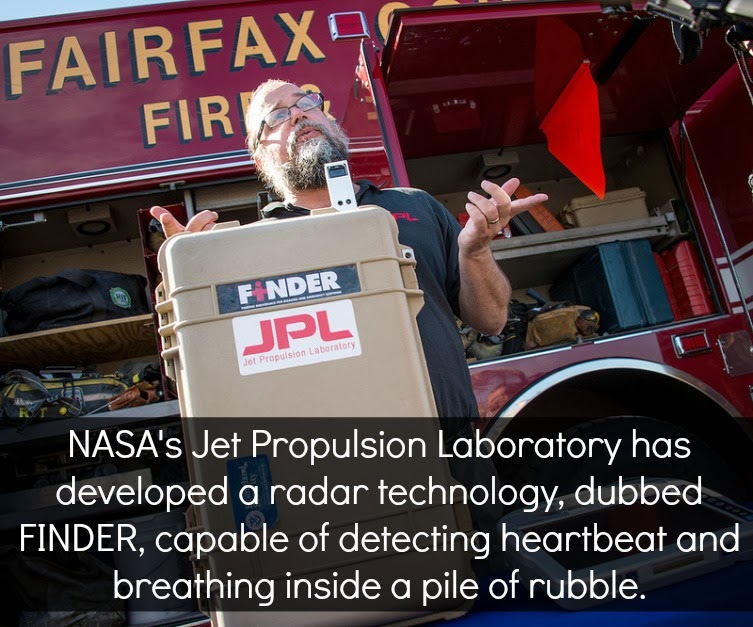
My measure of human progress (whether valid or not) is based on how much Star Trek technology has come to fruition. We’re still waiting on teleportation, fully functional replicators, and warp speed, but researchers at JPL have developed what could be considered an early tricorder.
The device, about the size of a small bag, is designed to detect heartbeats at a distance. Using microwaves, they are able to penetrate 30 feet into rubble or 20 feet into solid concrete and detect heartbeats and breathing.
“Your body moves when your heart beats, as the microwave goes through things, we can see the skin moving and we look for those little tiny changes.” said Jim Lux, the projects task manager.
This device, dubbed FINDER, could be used to search for survivors after a disaster drastically reducing response times by targeting resources to places we know have people in need. However, it’s capabilities aren’t limited to disaster scenarios. The device is sensitive enough to differentiate between humans and a number of animals based on the cardiac readings. Fish and Wildlife is interested in using the technology to count populations of bears or fish.
Lux estimates that FINDER will debut this year and retail for roughly $10,000.
While FINDER represents a new application, the technology isn’t exactly new. NASA uses the same process to measure the distance of distant space craft.
A prototype of FINDER was demonstrated for Homeland Security in September of 2013 and FEMA intends to test it as well.
Next we should tackle the holodeck. It just looks like so much fun.